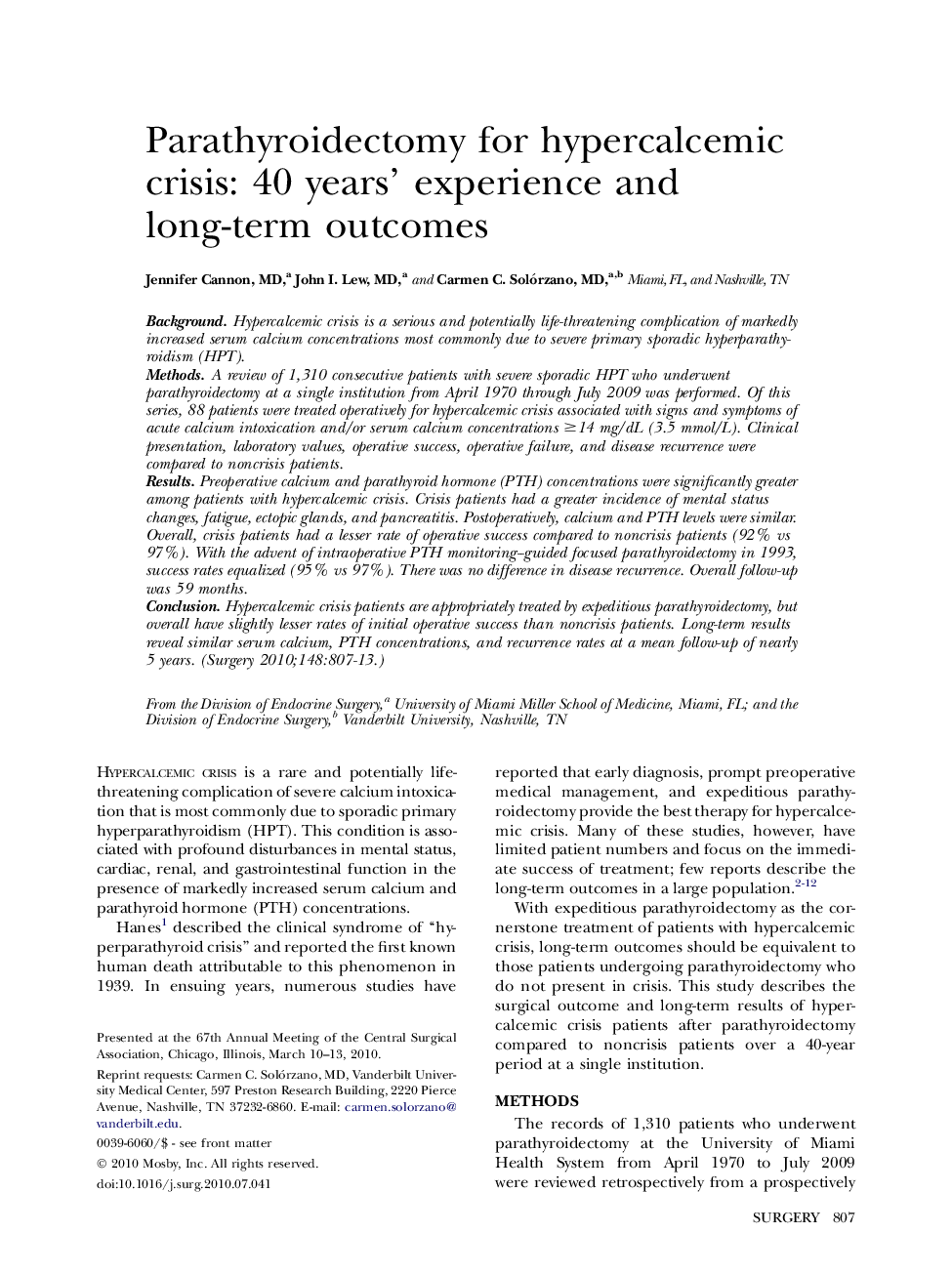| Article ID | Journal | Published Year | Pages | File Type |
|---|---|---|---|---|
| 4309054 | Surgery | 2010 | 7 Pages |
BackgroundHypercalcemic crisis is a serious and potentially life-threatening complication of markedly increased serum calcium concentrations most commonly due to severe primary sporadic hyperparathyroidism (HPT).MethodsA review of 1,310 consecutive patients with severe sporadic HPT who underwent parathyroidectomy at a single institution from April 1970 through July 2009 was performed. Of this series, 88 patients were treated operatively for hypercalcemic crisis associated with signs and symptoms of acute calcium intoxication and/or serum calcium concentrations ≥14 mg/dL (3.5 mmol/L). Clinical presentation, laboratory values, operative success, operative failure, and disease recurrence were compared to noncrisis patients.ResultsPreoperative calcium and parathyroid hormone (PTH) concentrations were significantly greater among patients with hypercalcemic crisis. Crisis patients had a greater incidence of mental status changes, fatigue, ectopic glands, and pancreatitis. Postoperatively, calcium and PTH levels were similar. Overall, crisis patients had a lesser rate of operative success compared to noncrisis patients (92% vs 97%). With the advent of intraoperative PTH monitoring–guided focused parathyroidectomy in 1993, success rates equalized (95% vs 97%). There was no difference in disease recurrence. Overall follow-up was 59 months.ConclusionHypercalcemic crisis patients are appropriately treated by expeditious parathyroidectomy, but overall have slightly lesser rates of initial operative success than noncrisis patients. Long-term results reveal similar serum calcium, PTH concentrations, and recurrence rates at a mean follow-up of nearly 5 years.
